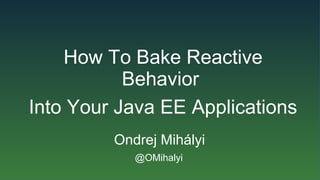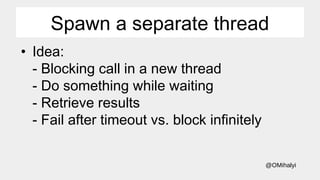This document discusses how to make Java EE applications more reactive. It describes traditional synchronous approaches that can cause threads to wait idly. Various asynchronous techniques are presented, including spawning new threads, finishing requests in callbacks, and using CompletableFuture. The document also outlines reactive features in Java EE like the asynchronous API, and how Payara Micro enables simple messaging and caching across instances through automatic clustering. Overall it advocates a gradual approach to reactivity in Java EE to avoid over-engineering while leaving room for future improvements.

































